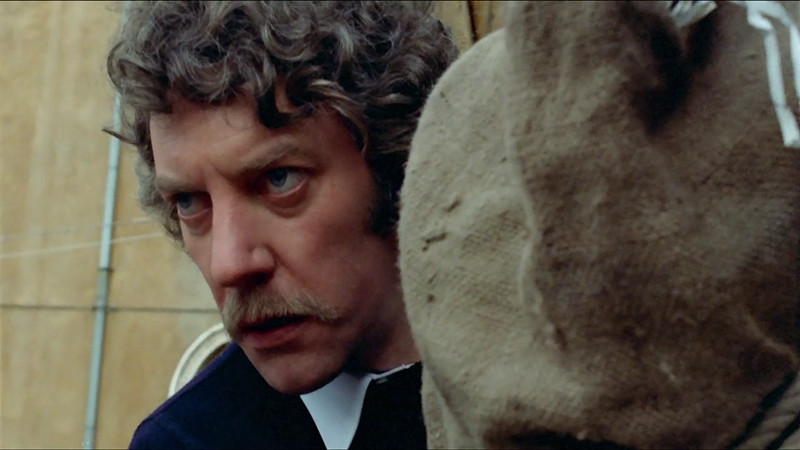
It’s a bit hard to believe that. in a world with so many bad films, a good film can be overlooked or forgotten, especially if it was created by first rate artists, but it does happen.
Sometimes film makers go out of fashion and even their best works can be swept aside. Sometimes a film maker is perceived as making a certain type of film and anything that’s an outlier to the auteurist theory crowd can be put to the side for the sake of continuity. Quite often, a film maker is loved by the select few and, no matter how good a film is made, it won’t get known widely.
Sometimes autumnal works of even great film makers, perhaps lacking the spark or energy of earlier works but gaining in depth of maturity, are pushed aside for those of newer and more immediate artists. Conversely, good early works by those yet to achieve greater fame are forgotten.
Something such as this happened to every one of the films listed below. Hopefully, the reader will be moved to find or revisit some of these works.
1. Gone to Earth (a.k.a The Wild Heart 1950/52)
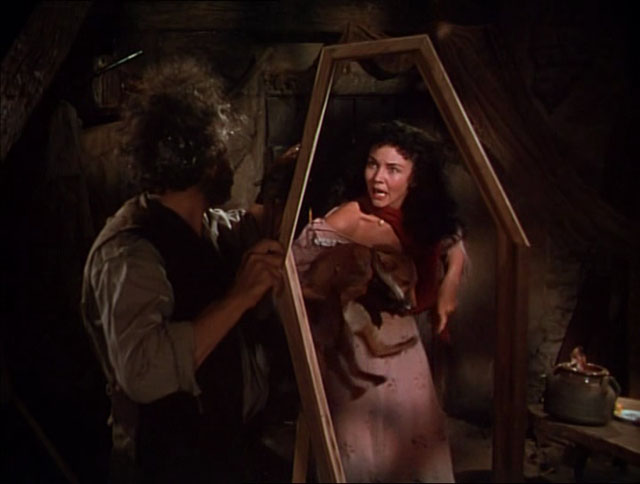
To many lovers of classic film, the colorful, always unique pictures made by the British film making team “The Archers” (director/writer Michael Powell and writer/producer Emeric Pressburger) are simply indispensable. However, at least one of their individualist films has managed to fall through the cracks.
This film was made not long after their magnum opus, 1948’s The Red Shoes, and was taken from a novel greatly admired in the U.K., with all of the team’s usual top notch collaborators. Yet, it was barely seen outside of the U.K., and, even then, in a horribly butchered version disdained by almost everyone. How did this happen? Well…
By the late 1940’s, the famed Hollywood producer David O. Selznick’s fortunes had toppled precipitously from his back to back best picture Oscar wins Gone With The Wind (1939) and Rebecca (1940). In the ensuing decade he had discovered a young lady who became his big female star both professionally and personally.
The lady was Jennifer Jones and her mentor had done a great job of guiding her from unknown to Oscar winning stardom (1943’s The Song of Bernadette) but after the dubious but financially successful Duel in the Sun (1946), it looked like neither could do anything right, with even well made films such as 1948’s Portrait of Jennie drowning in red ink.
Selznick then had the not illogical idea of taking his-by-then wife to Europe and having some of that continent’s best film makers work with her, giving her an international cache. Sad to say, Selznick, an infamous meddler and second-guesser in his professional life, couldn’t or wouldn’t change his ways while in Europe.
Through an arrangement with The Archer’s then-current producer, J. Arthur Rank, he made a deal for the team to create a film version of author Mary Webb’s well-known and respected novel Gone to Earth, a mystical tale of a gypsish young women with the improbable name of Hazel Woodrus who finds no end of trouble in late 19th century England due to both her uncanny ways with nature (her best friend is her tamed pet fox) and the conflict which results when magical signs direct her to choose a very wan young minister over a lusty, attractive, but none-too-ethical local squire, who isn’t the type to give up.
The novel, like any good one, has its own style and one, in this case, hard to capture. Powell never thought that they quite did but modern viewers tend to disagree due to the usual sumptuous visuals and well modulated dramatic scenes and good acting which often graces Archer’s films (and, needless to say, Miss Jones was Hazel, stage actor Cyril Cusak as the minister, the wonderfully handsome and talented Archer’s favorite David Farrar, a man who deliberately side-stepped stardom, as the squire, with future Oscar winner Hugh Griffith as Hazel’s father).
The full version ran just under two hours and was and is very much like both an Archer’s film and a Selznick film. However, Selznick just hated it. He took his rights as the U.S owner (Rank released the original cut in the U.K.) and tinkered with it for two years at a not inconsiderable cost (which he, by then, could ill afford), chopping out nearly AN HOUR of footage and having the distinguished Rouben Mamoulian direct almost an half hour of retakes without credit.
The abominable results were released as The Wild Heart to very little fanfare (Selznick International hardly existed by then and was in no shape to widely release anything). Sadly, until recent years, viewers outside of the U.K. only had this mess by which to judge the film. Happily, a new day has dawned and this unusual and intriguing film can, and should be, seen in its intended version.
2. The Bad and the Beautiful (1952)
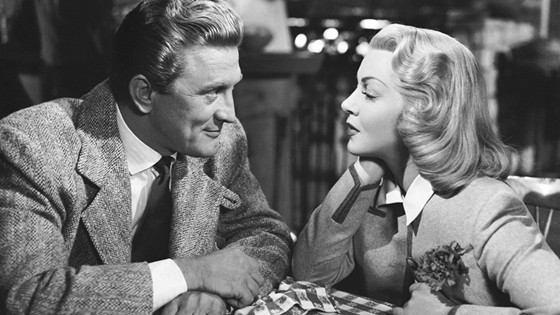
MGM studios must have been in either a self-reflective mood or Hollywood happy in 1951 since the studio gave the green light to not one but two major projects dealing with behind-the-scenes-stories of Hollywood film making. One of them was Singin’ in the Rain, is now often regarded as the best cinematic musical of all time. The other was directed by Vincente Minnelli, quite often regarded as the finest of MGM’s musical directors (thus, one of the best period).
However, this film, as, ironically, the majority of Minnelli’s films, wasn’t a musical. It’s often forgotten that the director was also a fine maker of intense dramas (also with an artistic flair) and that the subsequent film, The Bad and the Beautiful (changed from the original title Tribute to a Bad Man, per request of its female lead) is one of his best ever.
Whenever films about films are made there’s always a roman a clef quality or, at least, speculation about them (it seems too tempting for industry insiders not to insert stories which happened to them or which they knew about). Even Singin’ used, in a mild way, some stories of early sound Hollywood. However, TBAB is perhaps the mother lode for such films. Every character and plotline has its roots in some Tinsel Town person or event.
The story involves one Jonathan Shields (Kirk Douglas at his very best), a second generation film producer who has run aground when his enviable string of hits has run dry. Through an old “frenemy” film exec (Walter Pidgeon), who has set up a phone meeting in Hollywood while the now disgraced producer is in exile in France, the man frantically pitches a new product to three old acquaintances.
One is a leading director (Barry Sullivan), who started out with the producer and helped him achieve his early successes, only to be shafted when their big break arrived. The next is a big (and “beautiful”) female film star (Lana Turner), the daughter of a once great theater/stage actor and greater roué who had drunk himself to death and left her to follow the same path…until the producer picked her up out of the gutter and made her a star….only to betray her with another woman.
The third is a distinguished writer (Dick Powell), whom the producer lured to Hollywood and then, in order to get the writer to concentrate, palmed his obnoxious wife (Oscar winning Gloria Grahame) onto a wild Latin matinee idol (Gilbert Roland)…only to have her die in a plane crash with him (the author did, however, end up writing a Pulitzer Prize winning novel about the whole thing).
All of this sounds so trashy and, well, by some measures it is. In Charles Schnee’s Oscar winning scriptz are bits and pieces of stories about David O. Selznick (again), F. Scott Fitzgerald, producer Val Lewton, John and Diana Barrymore (with a big change of ending), and many others. However, the script has a genuine sense of humor (for example, a big preview scene ends with a young lady gleefully writing “it stinks!” on her card, only to reveal in the next scene that she wrote the only negative comment).
Also, Minnelli had a way with actors (many were surprised at Turner’s performance, for instance) and a way with design (he started as a designer in the theater). Even though the film is monochrome (photographed by the great Robert Surtees), it has a most sumptuous look and feel.
Beyond all that, the film’s collaborators give a real sense, past all the melodramatic stories torn from Tinseltown history, of the excitement and chaos of creativity and collaboration. In light of that the film’s ending makes sense in a place where the thrill of achievement can outdo all but the worst of emotional conflicts.
3. Pickup on South Street (1953)
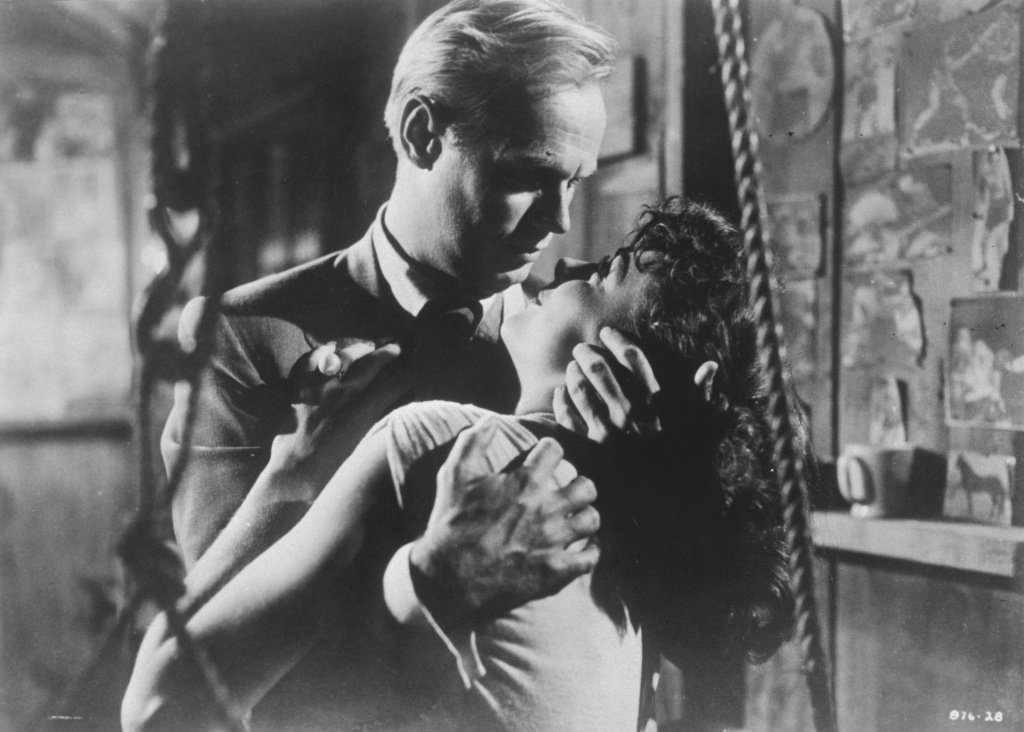
Film maker Samuel Fuller was a character if ever there was one. Short, pugnacious, feisty, and never lacking in opinion and bravado (though warmly so), Fuller had fought in World War II and served an apprenticeship as a newspaper reporter, allowing him to segue into screenwriting and then into directing. He concentrated on war films and thrillers, sometimes with socio-political undertones.
These were not films which the highbrow critics and viewers and certainly not The Academy took too seriously or to their hearts. However, one performer in one of his films did break the Oscar (nomination) barrier in what now looks like one of his best films.
One big political idea Fuller expressed was that he hated communist (it was the Red Scare era, after all). During one of his rare (and short) times at a major studio (Twentieth Century Fox in this case) he came up with a novel idea. The story sees a petty pickpocket, a career criminal, stealing the handbag of a prostitute on a N.Y.C. subway car.
The FBI agents following her become frantic to track the man down since the woman was the unwitting courier of some vital microfilm an old “business partner” had asked her to deliver in the now-stolen bag.
The hunt involves a colorful little old lady who obstensibly sells ties on the street but, more profitably, sells info to the cops in order to pay for her eventual funeral. The thief ends up being hunted by both sides wanting the film back and gets involved with the none-too-bright young woman, who ends up in a desperate situation of her own, as does the lady stoolie. A lot of (old movie style) violence commences.
This is the stuff of B movies, surely. However, Fuller was a film maker without pretense and he could find the art in the artless with his muscular, take no prisoners style married to an oddly literary quality. This film is a supreme example of his work, due in no small part to the solid, if not spectacular, production values a big studio back in the studio era can afford (even allowing for the film’s ending, which is only obstensibly happy but quite subversive when contemplated).
A large part of this is the cast. Fuller wasn’t always able to cast top actors but he was surprisingly good with the ones he got. In the case of this film, he had Richard Widmark, one of the few stars who always thought like a character actor, as a perfect lead, with Fox’s by-far most substantial starlet Jean Peters giving her best performance, and the likes of Richard Kiley, Mervyn Vye and Milburn Stone in support.
However, the whole show is stolen by the incredible Thelma Ritter, who earned the only major Academy Award nomination ever given to a Fuller film (and she deserved this and a number of the other five Oscars she lost in her career). If there is a sensitive moment in Fuller’s oeuvre, it would be in the death scene of her lowly, yet naturally dignified, character. Perhaps the spark of human warmth she adds is why this may well be Fuller’s masterpiece.
4. French Can-Can (1955)
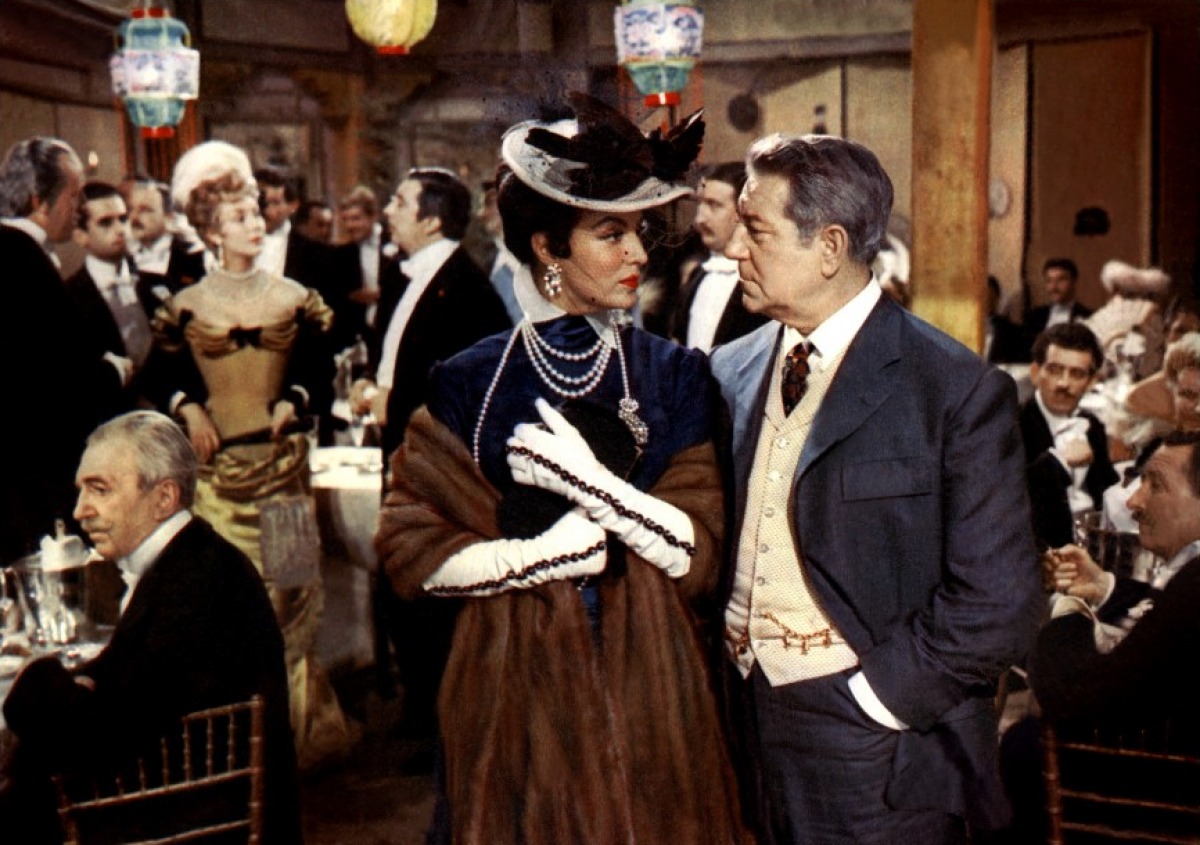
After a decade and a half away due to World War II, France’s Jean Renior finally returned to film making in his native land with this lovely period film. Once again employing his frequent star, the French acting icon Jean Gabin, Renoir decided to tell a very French story in a comfortable and familiar style.
The plot revolves around a real person, Henri Danglard (Gabin), the owner of a none-too-successful night spot in late 19th century Paris. Taking a thoughtful walk through the colorful, earthy Montmarte section of Paris, he spots a lovely young washerwomen (Francoise Arnoul) dancing “The Can-Can”, a popular dance of long ago. He gets the idea of using the woman to bring the dance back into fashion in a lavish new establishment he plans to open (the Moulin Rouge, of course).
While the story is cozy, the style is impeccable. Many of Renoir’s old collaborators, such as Gabin, return to his fold as though no time had passed. A worthy new addition, and one which really makes the film more than any other, is the cinematographer, Michel Kelber. He, along with set designer Max Douy and costume designer Rosine Delamare, help to give the film the lovely period look, much like a Toulouse-Lautrec painting, which imbues the film with so of its much nostalgic power, especially thanks the warm and heavily saturated colors.
Sadly, the critics who would shortly become the creators/directors of the New Wave looked on films such as this (and their makers) as relics of a formal period of cinema which was anathema to them. Later on Renoir was seen as one of the great film making masters, a man actually ahead of his time, and many of his films were placed in the pantheon. This one belongs with them.
5. The Pawnbroker (1965)
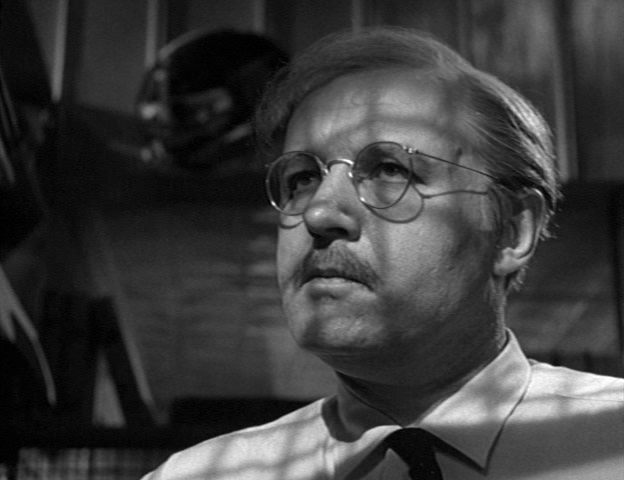
Starting as a juvenile actor on the Yiddish stage at a very young age, director Sidney Lumet, who came from a theatrical family, was a New Yorker through and through and stuck to his guns making his films there always.
The Pawnbroker was taken from an acclaimed novel by Edward Lewis Wallant and concerns the title character, Sol Nazerman, who owns a pawn broking shop in Harlem (which actually launders money for the mafia) and who has survived losing his family and academic career in the Holocaust, during which he and they were interred in a concentration camp.
Living with his sister, who choses to ignore the past, and her family outside of New York City, he goes through his days as a virtual zombie, afraid to feel anything but haunted by his memories of the horrors of the camps. Sadly, situations swirling around him will demand a response and his deep removal from the present will lead to catastrophic results.
Incredibly, no US film had ever before this one been made which even touched on the Holocaust. In fact, many in the US at the time had only a vague knowledge of this earthshaking event (which was, of course, folded into the even bigger World War II).
Hollywood would wait several more years to ever address the matter. In light of all of that, the fact of this film’s existence is remarkable enough, much less the fact that it is so uncompromising in its refusal to put a happy face on any of its issues (and few who have seen it can forget its disturbing and emotionally overwhelming finale).
Lumet is to thank for this and for filming in real N.Y.C. locales, which add much gritty verisimilitude to the proceedings. One major factor, though is the cast. This cast includes such excellent and often underutilized players of the day as Geraldine Fitzgerald, Brock Peters and Jaime Sanchez (and also, as it happens, the debut of no less than Morgan Freeman!).
However, the main attraction is the actor playing the title character, Rod Steiger. This is truly the actor’s finest hour. This picture is a real downer by its very definition and not an item that would ever be popular with the feel-good crowd. That its makers recognized that fact and went for broke, making the film with the artistic integrity for which its subject is demanding, is a great credit to all concerned.